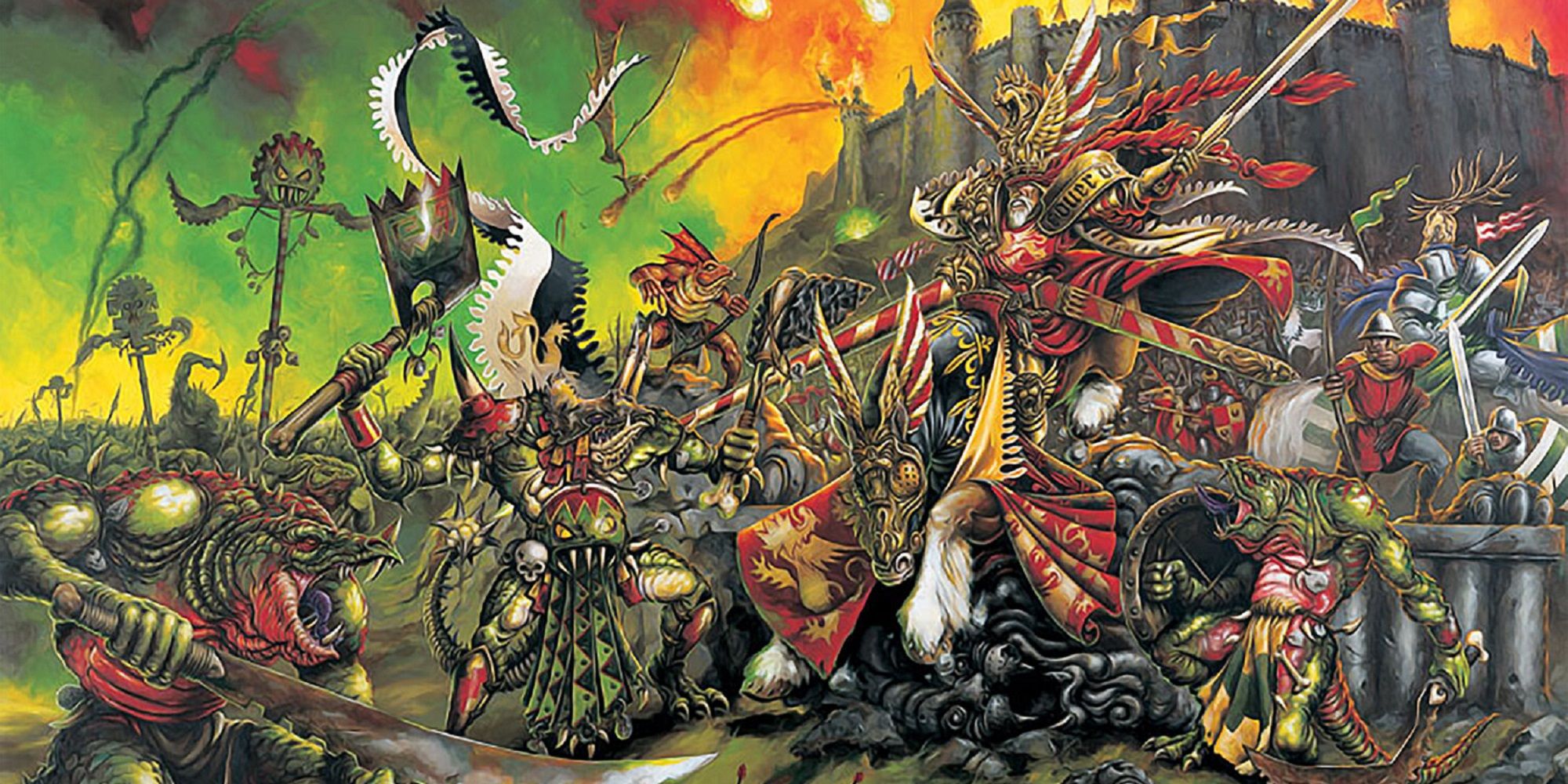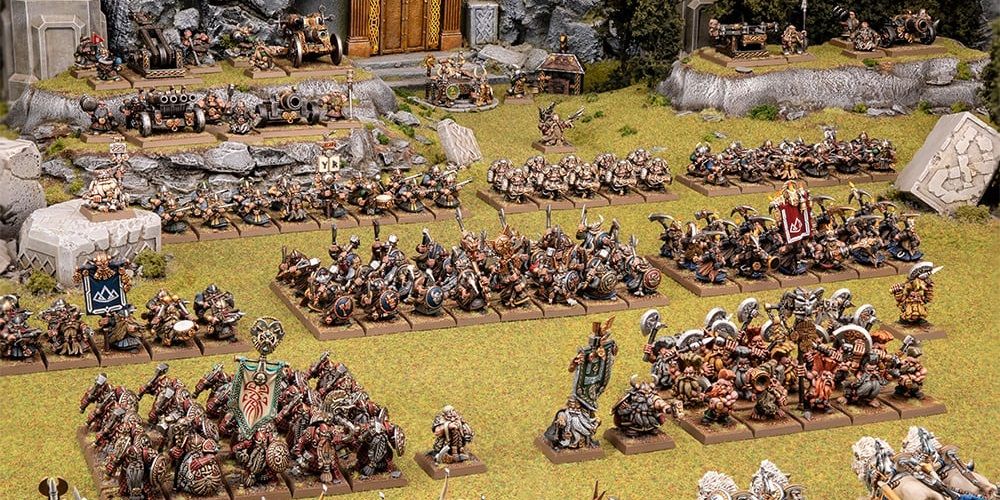Warhammer Fantasy is making a comeback in the guise of Warhammer: The Old World. While the name is a fresh coat of paint for the old wargaming system, many of the classic rules and models will harken back to a time when rules were more complex, flanking mattered, and fantasy wargames were more akin to historical tabletop battles of the past.
What I’m hoping for, though, is that this fresh coat of paint doesn’t actually touch the models. Many of the promotional images for Warhammer: The Old World look like repurposed Warhammer Fantasy photos of battlefields from the ‘90s and ‘00s. This was before companies put such stock into realistic paint ranges, and as such, models were bright and bold. Battlefields were swathes of bright green static grass, and models’ bases matched. It was unrealistic but iconic, and a far cry from the grimdarkness that permeates Age of Sigmar today.
Age of Sigmar was largely a change so that Games Workshop could shake up the Old World and create copyrightable versions of its generic fantasy tropes. That’s why Elves (called Aelves) are being phased out in favour of Lumineth Realm-lords (your classic high Elves by another name). Dwarfs (called Duardin) are being phased out in favour of Kharadron Overlords (Dwarfs of the sky) and Fyreslayers (Dwarfs of the, well, fire). Orcs are called Orruks, Lizardmen Seraphon, and Treefolk Sylvaneth.
However, it was also a change of gameplay direction. The rules were simplified considerably, bases changed from square to round, and units were no longer locked in formations. I much prefer the Sigmar rule system, for what it’s worth, but something was definitely lost in the change.
This was compounded by the focus on large monsters that Sigmar has. While I prefer most of the models released since AoS was released – big blocks of shoulder-to-shoulder infantry led to boring monopose units of 30 identikit Elves or Goblins – there has been a clear move away from rank and file troops and towards big boys. Whether that’s dragons, hero characters atop magnificent steeds, or gargants (the giant really wasn’t big enough), in Age of Sigmar, bigger is better. While I love the dynamism Workshop puts into its sculpts these days, I miss battles where one small dragon drew all your firepower and your troops had to really rally to defeat it in a battle of tactics and bravery. These days, dragons are so commonplace that some Stormcast use them for cavalry.
Warhammer: The Old World is a chance to go back. Bringing back fantasy as a specialist game like Warhammer 30k is a brilliant idea, but Games Workshop needs to nail the execution. I don’t want any of this hypermodern scenery, I don’t want perfectly blended paintjobs, and I don’t want giant monsters dominating the battlefield.
This is a chance to embrace the nostalgia that so many players have. The modern game is so much more welcoming and inclusive for a younger generation of players, but there’s a strong cohort of veterans who love square units and square bases, and indulging in their memories is no bad thing. I want to see the Citadel Castle adorning tabletops, I want vibrant green bases, I want to relive the game how it was when I was a kid. Maybe some rules need modernising, and perhaps the range of miniatures needs updating when it comes to stereotypes or diversity, but as long as the game remains spiritually similar, I’ll be happy.
We’ve got countless game systems where we can paint in grimdark tones and play skirmishes revolving around dragon-versus-dragon warfare. Let Warhammer: The Old World indulge in the past, let it feel archaic. It’s called a specialist game for a reason, so it should fill that retro niche. If I haven’t asked enough already, however, I think Games Workshop needs to mix up a fresh batch of Goblin Green while it’s at it.




